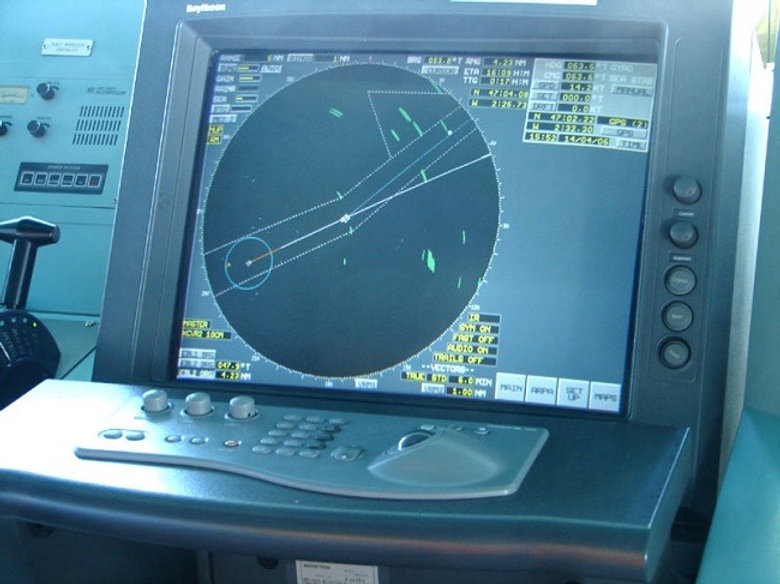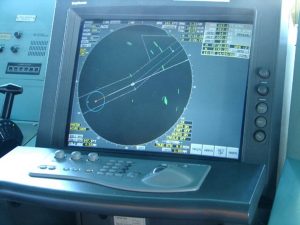Explore the vital role of radar observers and radar systems used on ships, including types, applications, training, and future innovations. Ideal for maritime students, cadets, officers, and professionals.
Introduction: What Guides Ships in Fog, Night, or Heavy Rain?
Imagine you’re navigating a vessel through dense fog in the middle of the ocean or maneuvering through a busy port at night. Your vision is impaired, but you’re not blind. Why? Because marine radar systems and trained radar observers are guiding your way.
Radar is not just a tool—it’s a lifesaving navigation system that enables ships to detect, track, and avoid obstacles and other vessels in real-time. Understanding how radars work and the critical role of radar observers is a must for every seafarer.
Credit: https://www.marineteacher.com/post/working-principle-of-marine-radar
What Is Marine Radar?
Marine radar (Radio Detection and Ranging) is an onboard electronic system that uses radio waves to detect and track objects such as ships, landmasses, buoys, and weather formations. It displays this information visually, allowing navigators to make informed decisions.
What Is a Radar Observer?
A Radar Observer is a trained and certified person responsible for operating radar systems, interpreting radar images, and making navigation decisions based on radar data. In many cases, this is the Officer of the Watch (OOW) or a licensed deck officer.
Radar observer training is often part of the STCW Convention and required for certification, especially on SOLAS-compliant vessels.
Importance of Radar Systems and Radar Observers
Why Radars Matter on Ships:
-
Collision Avoidance: Detects other vessels and their movements
-
Situational Awareness: Enhances visibility in poor weather or night
-
Coastal Navigation: Identifies landmarks and aids in precise maneuvering
-
Search and Rescue (SAR): Locates distressed vessels or objects at sea
“Radar is not a replacement for the human eye—it is an extension of it, especially in zero-visibility conditions.” – Capt. Andreas Smith, Marine Navigation Instructor
Key Components of a Marine Radar System
-
Antenna/Scanner Unit: Rotates and transmits radio waves
-
Transmitter & Receiver: Sends and receives radar pulses
-
Display Screen (PPI): Shows the radar image in real-time
-
ARPA (Automatic Radar Plotting Aid): Tracks multiple targets and predicts collisions
-
ECDIS/Radar Overlay: Integrates radar data into electronic charts for enhanced navigation
Types of Radar Used on Ships
1. X-Band Radar (9.3–9.5 GHz)
-
High resolution and target detail
-
Best for short-range navigation and detecting small objects
-
More affected by weather conditions
2. S-Band Radar (2.9–3.1 GHz)
-
Longer wavelength, ideal for long-range detection
-
Performs better in heavy rain, fog, or snow
-
Common on large ships and in ECDIS integration
3. ARPA-Integrated Radar
-
Offers automatic target acquisition and tracking
-
Calculates CPA (Closest Point of Approach) and TCPA (Time to CPA)
-
Essential for collision avoidance
Radar Observer Training & Certification
STCW Radar Training Requirements:
According to the STCW Convention (Standards of Training, Certification, and Watchkeeping), officers must complete:
- Radar Navigation, Radar Plotting, and Use of ARPA
- Radar Observer Certificate (in some jurisdictions, e.g., U.S. Coast Guard)
- Refresher training every 5 years
Training Topics Include:
- Radar plotting techniques (manual & ARPA)
- Target tracking and risk assessment
- Radar limitations and interference
- Integration with other navigation aids (AIS, ECDIS)
Real-World Example: Radar Use on the Bridge
A bulk carrier is navigating through the English Channel during heavy fog. The Officer of the Watch:
-
Activates both X-band and S-band radars
-
Engages ARPA to monitor nearby vessels and calculate risk of collision
-
Uses radar overlay on ECDIS for enhanced decision-making
-
Calls the Master and takes early action to alter course and maintain safe distance
This seamless integration of technology and human judgment is a textbook example of radar-based bridge navigation.
Radar Limitations: What Observers Must Know
While radar is a powerful tool, it has limitations:
-
Blind Sectors caused by masts or funnel structures
-
Clutter due to sea waves or rain
-
Ghost Targets or false echoes
-
Minimum range limitations in close-quarters situations
Training emphasizes recognizing and compensating for these weaknesses.
Latest Trends & Future of Radar on Ships
1. Solid-State Radar Technology
-
No magnetron—more reliable and energy-efficient
-
Better target definition and range accuracy
2. AI-Based Target Recognition
-
Identifies object types automatically
-
Useful in complex traffic areas
3. Integrated Bridge Systems (IBS)
-
Seamless communication between radar, AIS, GPS, and ECDIS
-
Advanced alarms and decision support
4. Autonomous Ship Navigation
-
Radar data plays a vital role in autonomous navigation and collision avoidance algorithms
FAQs: Radar Systems and Radar Observers
Q1: What’s the difference between ARPA radar and basic radar?
A1: ARPA radar automatically tracks targets and calculates collision risks, whereas basic radar requires manual plotting.
Q2: Can radar work in bad weather?
A2: Yes, but performance can be affected. S-band radar is better suited for heavy weather conditions.
Q3: Is radar training required for all seafarers?
A3: It’s mandatory for deck officers and anyone involved in navigational watchkeeping under STCW.
Q4: How is radar different from AIS?
A4: Radar detects all physical objects; AIS only shows vessels transmitting identification signals.
Conclusion: Radar and Human Expertise—A Winning Combination
Marine radar systems, combined with trained radar observers, are the cornerstone of safe ship navigation in modern maritime operations. As technology evolves, so does the complexity and capability of radar systems—but human expertise remains irreplaceable.
For students, cadets, officers, and maritime enthusiasts, gaining deep knowledge of radar operations and certification is not just a requirement—it’s a professional advantage.
Explore more about STCW radar training, bridge navigation systems, and modern radar manufacturers.
Further Reading & References
-
IMO STCW Convention: https://www.imo.org
-
The Nautical Institute – Radar and ARPA Resources
-
Furuno Marine Radar Systems: https://www.furuno.com
-
Sperry Marine (Northrop Grumman) Radar Solutions
-
U.S. Coast Guard Radar Observer Certificate Info: https://www.dco.uscg.mil




What’s up to all, how is the whole thing, I think every one is getting
more from this site, and your views are good in support of new people.